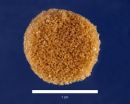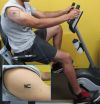(Press-News.org) SAN FRANCISCO, Aug. 13, 2014 — Injuries, birth defects (such as cleft palates) or surgery to remove a tumor can create gaps in bone that are too large to heal naturally. And when they occur in the head, face or jaw, these bone defects can dramatically alter a person's appearance. Researchers will report today that they have developed a "self-fitting" material that expands with warm salt water to precisely fill bone defects, and also acts as a scaffold for new bone growth.
The team will describe their approach in one of nearly 12,000 presentations at the 248th National Meeting & Exposition of the American Chemical Society (ACS), the world's largest scientific society, taking place here through Thursday.
Currently, the most common method for filling bone defects in the head, face or jaw (known as the cranio-maxillofacial area) is autografting. That is a process in which surgeons harvest bone from elsewhere in the body, such as the hip bone, and then try to shape it to fit the bone defect.
"The problem is that the autograft is a rigid material that is very difficult to shape into these irregular defects," says Melissa Grunlan, Ph.D., leader of the study. Also, harvesting bone for the autograft can itself create complications at the place where the bone was taken.
Another approach is to use bone putty or cement to plug gaps. However, these materials aren't ideal. They become very brittle when they harden, and they lack pores, or small holes, that would allow new bone cells to move in and rebuild the damaged tissue.
To develop a better material, Grunlan and her colleagues at Texas A&M University made a shape-memory polymer (SMP) that molds itself precisely to the shape of the bone defect without being brittle. It also supports the growth of new bone tissue.
SMPs are materials whose geometry changes in response to heat. The team made a porous SMP foam by linking together molecules of poly(ε-caprolactone), an elastic, biodegradable substance that is already used in some medical implants. The resulting material resembled a stiff sponge, with many interconnected pores to allow bone cells to migrate in and grow.
Upon heating to 140 degrees Fahrenheit, the SMP becomes very soft and malleable. So, during surgery to repair a bone defect, a surgeon could warm the SMP to that temperature and fill in the defect with the softened material. Then, as the SMP is cooled to body temperature (98.6 degrees Fahrenheit), it would resume its former stiff texture and "lock" into place.
The researchers also coated the SMPs with polydopamine, a sticky substance that helps lock the polymer into place by inducing formation of a mineral that is found in bone. It may also help osteoblasts, the cells that produce bone, to adhere and spread throughout the polymer. The SMP is biodegradable, so that eventually the scaffold will disappear, leaving only new bone tissue behind.
To test whether the SMP scaffold could support bone cell growth, the researchers seeded the polymer with human osteoblasts. After three days, the polydopamine-coated SMPs had grown about five times more osteoblasts than those without a coating. Furthermore, the osteoblasts produced more of the two proteins, runX2 and osteopontin, that are critical for new bone formation.
Grunlan says that the next step will be to test the SMP's ability to heal cranio-maxillofacial bone defects in animals. "The work we've done in vitro is very encouraging," she says. "Now we'd like to move this into preclinical and, hopefully, clinical studies."
INFORMATION:
A press conference on this topic will be held Wednesday, August 13, at 9 a.m. Pacific time in the Moscone Center, North Building. Reporters may report to Room 113 in person, or access live video of the event and ask questions at the ACS Ustream channel http://www.ustream.tv/channel/acslive.
The researchers acknowledge funding from the Texas A&M Engineering Experiment Station.
The American Chemical Society is a nonprofit organization chartered by the U.S. Congress. With more than 161,000 members, ACS is the world's largest scientific society and a global leader in providing access to chemistry-related research through its multiple databases, peer-reviewed journals and scientific conferences. Its main offices are in Washington, D.C., and Columbus, Ohio.
To automatically receive news releases from the American Chemical Society, contact newsroom@acs.org.
Note to journalists: Please report that this research is being presented at a meeting of the American Chemical Society.
Follow us: Twitter | Facebook
Title
"Self-fitting" shape memory polymer (SMP) scaffold with potential to treat cranio-maxillofacial (CMF) bone defects
Abstract
Improvements in scaffold design are needed to realize the potential of tissue engineering to heal critical-sized cranio-maxillofacial (CMF) bone defects. In particular, scaffolds that can precisely match the irregular boundaries of bone defects as well as exhibit an interconnected pore morphology and bioactivity would enhance tissue regeneration. In this work, a shape memory polymer (SMP) scaffold was developed exhibiting an open porous structure and the capacity to conformally "self-fit" into irregular defects. The SMP scaffold was prepared via photocrosslinking of poly(ε-caprolactone) (PCL) diacrylate using a solvent casting/particulate leaching (SCPL) method which included a fused salt template. A bioactive polydopamine coating was applied to the pore walls. Following exposure to warm saline at T > Ttrans (Ttrans = Tm of PCL), the scaffold became malleable and could be pressed into an irregular model defect. Subsequent cooling caused the scaffold to lock in its temporary shape within the defect. Polydopamine-coated scaffolds exhibited superior bioactivity (i.e. formation of hydroxyapatite in vitro), osteoblast adhesion, proliferation, osteogenic gene expression and ECM deposition.
'Shape-shifting' material could help reconstruct faces
2014-08-13
ELSE PRESS RELEASES FROM THIS DATE:
Dust -- and the microbes hitching rides on it -- influences rain, climate
2014-08-13
SAN FRANCISCO, Aug. 13, 2014 — Dusty air blowing across the Pacific from Asia and Africa plays a critical role in precipitation patterns throughout the drought-stricken western U.S. Today, a scientist will present new research suggesting that the exact chemical make-up of that dust, including microbes found in it, is the key to how much rain and snow falls from clouds throughout the region. This information could help better predict rain events, as well as explain how air pollution from a variety of sources influences regional climate in general.
She will present a talk ...
Rooting out skin creams that contain toxic mercury
2014-08-13
SAN FRANCISCO, Aug. 13, 2014 — As countries try to rid themselves of toxic mercury pollution, some people are slathering and even injecting creams containing the metal onto or under their skin to lighten it, putting themselves and others at risk for serious health problems. To find those most at risk, scientists are reporting today that they can now identify these creams and intervene much faster than before. They're speaking at the 248th National Meeting & Exposition of the American Chemical Society (ACS).
The meeting, organized by the world's largest scientific society, ...
Tattoo biobatteries produce power from sweat (video)
2014-08-13
SAN FRANCISCO, Aug. 13, 2014 — In the future, working up a sweat by exercising may not only be good for your health, but it could also power your small electronic devices. Researchers will report today that they have designed a sensor in the form of a temporary tattoo that can both monitor a person's progress during exercise and produce power from their perspiration.
The team described the approach in one of nearly 12,000 presentations at the 248th National Meeting & Exposition of the American Chemical Society (ACS), the world's largest scientific society, taking place ...
A new look at what's in 'fracking' fluids raises red flags
2014-08-13
SAN FRANCISCO, Aug. 13, 2014 — As the oil and gas drilling technique called hydraulic fracturing (or "fracking") proliferates, a new study on the contents of the fluids involved in the process raises concerns about several ingredients. The scientists presenting the work today at the 248th National Meeting & Exposition of the American Chemical Society (ACS) say that out of nearly 200 commonly used compounds, there's very little known about the potential health risks of about one-third, and eight are toxic to mammals.
The meeting features nearly 12,000 presentations on ...
Passengers who survived terrifying Air Transat flight in 2001 help psychologists uncover new clues about post-traumatic stress vulnerability
2014-08-13
Toronto, Canada – An extraordinary opportunity to study memory and post-traumatic stress disorder (PTSD) in a group of Air Transat passengers who experienced 30 minutes of unimaginable terror over the Atlantic Ocean in 2001 has resulted in the discovery of a potential risk factor that may help predict who is most vulnerable to PTSD.
The study, led by researchers at Baycrest Health Sciences, is published online this week in the journal Clinical Psychological Science – ahead of print publication. It is the first to involve detailed interviews and psychological testing in ...
Why seniors don't eat: It's complicated
2014-08-13
WASHINGTON – More than half of older adults who visit emergency departments are either malnourished or at risk for malnutrition, but not because of lack of access to health care, critical illness or dementia. Despite clear signs of malnutrition or risk of malnutrition, more than three-quarters had never previously been diagnosed with malnutrition, according to the results of a study to be published online tomorrow in Annals of Emergency Medicine ("Malnutrition Among Cognitively Intact, Non-Critically Ill Older Adults in the Emergency Department").
"We were surprised ...
Giant Amazon fish becoming extinct in many fishing communities, saved in others
2014-08-13
An international team of scientists has discovered that a large, commercially important fish from the Amazon Basin has become extinct in some local fishing communities.
The team compared mainstream bioeconomic theory — which policymakers have depended on in order to protect fish populations — with the lesser-known "fishing-down" theory, which predicts that large, high-value, easy-to-catch fish can be fished to extinction.
"Bioeconomic thinking has predicted that scarcity would drive up fishing costs, which would increase price and help save depleted species," said study ...
Gene that controls nerve conduction velocity linked to multiple sclerosis
2014-08-13
Philadelphia, PA, August 13, 2014 – A new study published in The American Journal of Pathology identifies a novel gene that controls nerve conduction velocity. Investigators report that even minor reductions in conduction velocity may aggravate disease in multiple sclerosis (MS) patients and in mice bred for the MS-like condition experimental autoimmune encephalomyelitis (EAE).
A strong tool for investigating the pathophysiology of a complex disease is the identification of underlying genetic controls. Multiple genes have been implicated as contributing to the risk of ...
Clotting drug linked to fewer blood transfusions in joint surgery
2014-08-13
Tranexamic acid has been shown to reduce blood loss during or shortly after major joint surgery (the perioperative stage). However, safety concerns remain because large scale effectiveness studies are lacking.
In the USA, over 1 million hip and knee replacements are performed each year. In
England and Wales the figure is about 180,000.
So a team of US researchers, led by Dr Stavros Memtsoudis at Hospital for Special Surgery, Weill Cornell Medical College, and Dr Jashvant Poeran at Mount Sinai School of Medicine, both in New York, set out to determine the effectiveness ...
The Lancet Diabetes & Endocrinology: 2 out of every 5 Americans expected to develop type 2 diabetes during their lifetime
2014-08-13
Close to half (40%) of the adult population of the USA is expected to develop type 2 diabetes at some point during their lifetime, suggests a major study published in The Lancet Diabetes & Endocrinology. The future looks even worse for some ethnic minority groups, with one in two (> 50%) Hispanic men and women and non-Hispanic black women predicted to develop the disease.
A team of US researchers combined data from nationally representative US population interviews and death certificates for about 600 000 adults to estimate trends in the lifetime risk of diabetes and ...



